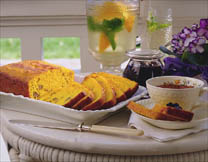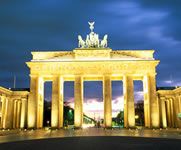The electric lights are dimmed, candles are lit, letting the faces of the people around the table glow. Now the food makes its entrance. Can you imagine something more elegant than a zander in a brown mustard crust presented on a virginal white plate from the Berliner Porzellanmanufaktur (a Berlin porcelain factory where the goods are produced largely by hand)? Or a tender shoulder of venison on an austere art deco plate from the Fürstenberg porcelain factory.
Culinary Germany
- A beer? We can offer you 5000!
- Germany - a paradise for sausage lovers
- 300 Types of Bread - and all of them healthy
- Potatoes, Selma and Sieglinde - the apples that grow in the soil
- Schnapps - a heavenly treat
- Freshness in abundance - German fish
- Water - as pure as our unspoilt nature
- Tableware & Dining culture
- Germany's Top 10 Food Museums
Germany for...
Tableware and German Dining Culture
The electric lights are dimmed, candles are lit, letting the faces of the people around the table glow. Now the food makes its entrance. Can you imagine something more elegant than a zander in a brown mustard crust presented on a virginal white plate from the Berliner Porzellanmanufaktur (a Berlin porcelain factory where the goods are produced largely by hand)? Or a tender shoulder of venison on an austere art deco plate from the Fürstenberg porcelain factory.

Just as popular as the afternoon tea in England is the German coffee break, especially on Sunday afternoons. The fine porcelain is filled with freshly-brewed coffee, and delicious pastries and home-made cake is served. Like in other European countries, coffee plays an important role in German social life. The coffee house Zum Arabischen Coffe Baum in Leipzig is one of the oldest continuously operating coffee houses in Europe which was first mentioned in records of 1556. Today it houses several cafes and restaurants serving specialty coffees, cake as well as other food and drinks. The third floor houses a coffee museum.
On the German table, cold beverages also come in style. Pilsener beer is typically served in an elegant flute. And turning to wine: the Riesling you drink with your fish sparkles green in a cut crystal glass and Sekt (German sparkling wine) bubbles perfectly in a long-stemmed flute.
Porcelain factories, silversmiths and glass works have a glorious tradition in Germany. Finely fashioned table settings and silverware, which in former times were reserved for royalty only, now decorate the dining tables of restaurants and hotels.
Travel Planner
Select an option...







